Stop! Never Plug These 10 Things into a Power Strip
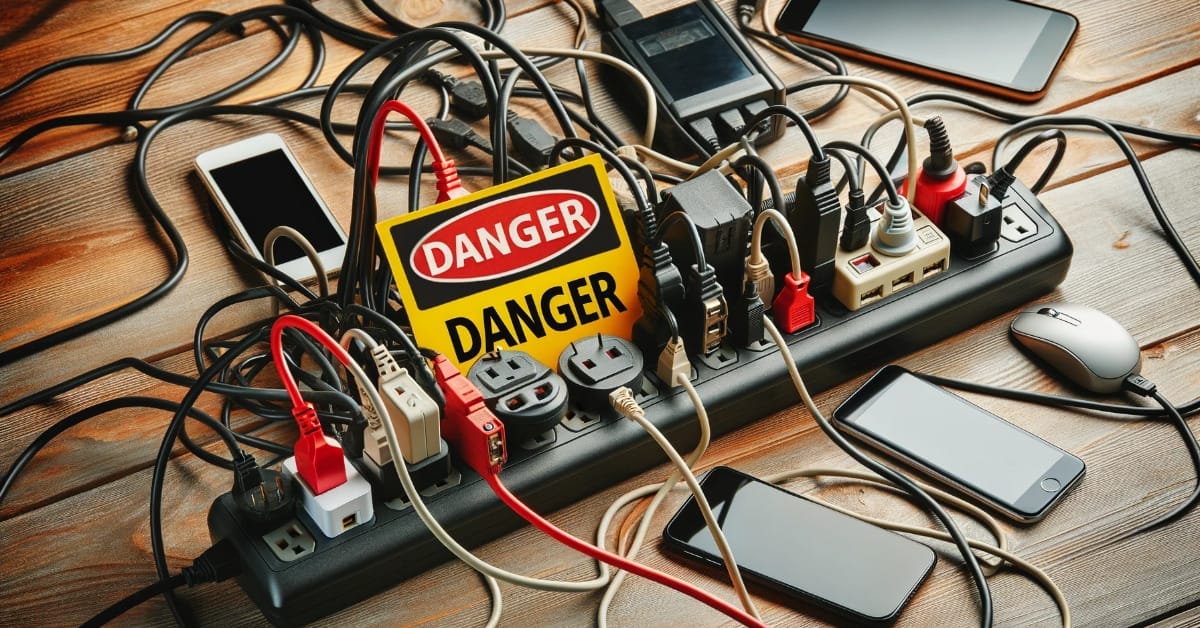
Alright, folks, we’ve all danced this dance – scrounging around for a free socket to juice up our gadget! Yet, remember this: not all of these power-hungry guys are meant to buddy up with your everyday power strip. Some of them crave a direct line, no middle-man allowed!
A Preview Of What We’ll Cover!
- ❄️ Refrigerators: Overload Alert!
- 🍿 Microwaves: Too Hot to Handle?
- ☕ Coffee Makers: Power Hungry?
- 🍞 Toasters: Heat Warning!
- 🍲 Slow Cookers: Time’s Toll
- 💇 Hair-Care Tools: Wattage Woes
- ❄️ Air Conditioners: Energy Eater
- 🌀 Blenders: Power Surge
- 👚 Washers: Demand Too High
- 🔥 Heaters: Current Caution
Let’s dive right in!
1. Refrigerators
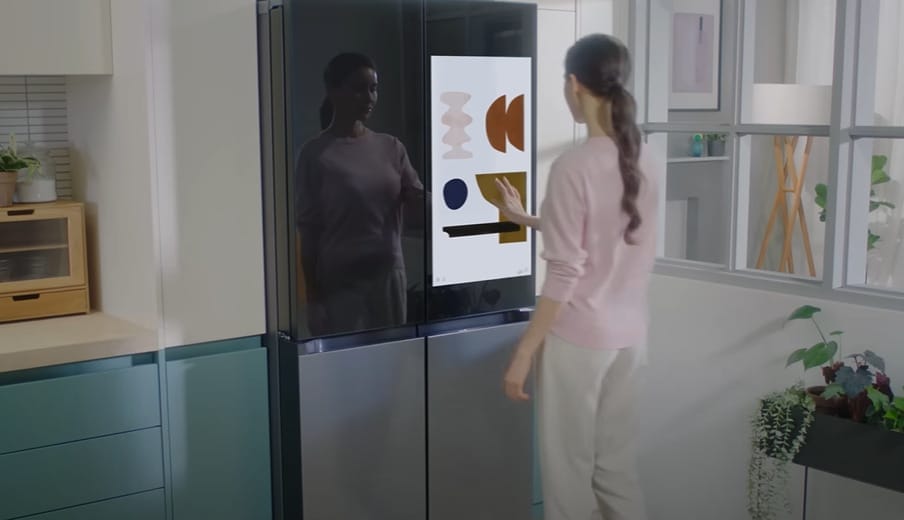
Now, refrigerators are big appliances. They require quite a bit of power to keep things cool and fresh. So, naturally, they cycle on and off pretty frequently.
You might consider plugging your refrigerator into a power strip to save space. But hold on a second, here’s the thing: power strips are designed for lighter loads, like computers or lamps.
Plugging heavy-duty appliances like refrigerators into power strips creates a risk of overloading, leading to malfunctions or even fire.
I know it’s tempting to consolidate all those cords and devices, but your refrigerator needs a dedicated outlet. Trust me, it’s better to be safe than sorry.
2. Microwaves

It’s important to remember that microwaves are heavy hitters regarding power usage. I know we all love using power strips for flexibility, but when it comes to microwaves, it’s a no-go!
Why, you ask? Let me explain. Microwaves draw a lot of current, which a power strip might not handle.
Light-load appliances, on the other hand, can safely be plugged into power strips. Think along the lines of computers, lamps, or clocks. Also, look for power strips with a built-in circuit breaker, as they provide that extra layer of safety.
3. Coffee Makers
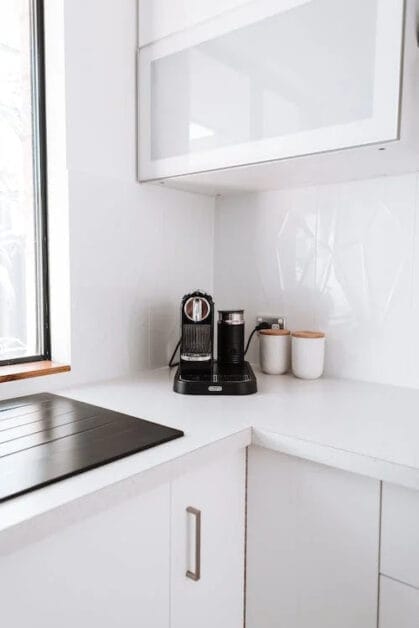
Ah, coffee! We all love it, but did you know that coffee makers can pose a risk when plugged into power strips? You see, these handy brewing machines need a lot of energy to get that delicious cup of joe ready. Now, power strips are great for devices with low power loads, like lamps or computers, but coffee makers are a whole different story.
So why is it bad to plug coffee makers into power strips? Well, the thing is, coffee makers are high-power equipment and, when plugged into power strips, can lead to the strip being overloaded. This, in turn, can cause the power strip to overheat or even catch fire.
When it comes to using coffee makers, here are a few safety tips to keep in mind:
- Always plug your coffee maker directly into a wall socket.
- Make sure no other high-power devices are sharing the same socket.
- Keep the area around your coffee maker free from clutter so it stays cool and safe.
4. Toasters
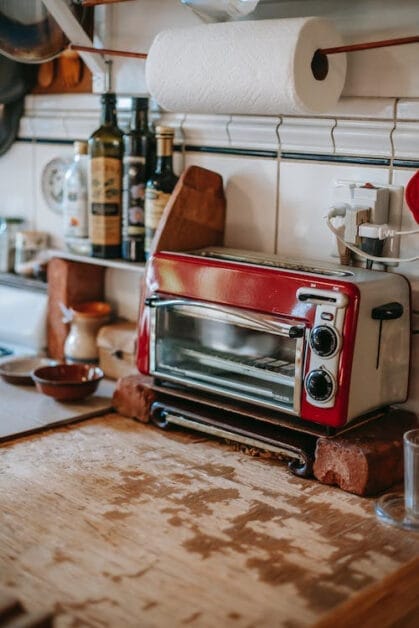
Ah, toasters – a staple in every kitchen and a must-have for perfect toast. But, when it comes to power strip safety, we’ve got to be extra careful with these handy appliances.
Toasters require a significant current draw, which can easily cause a power strip to overheat. I don’t know about you, but the last thing I want is a fire hazard in my kitchen.
So, to keep things safe and sound, always plug your toaster directly into a wall outlet instead of a power strip.
Remember, safety always comes first, especially where electricity is involved. Happy toasting, my friends!
5. Slow Cookers
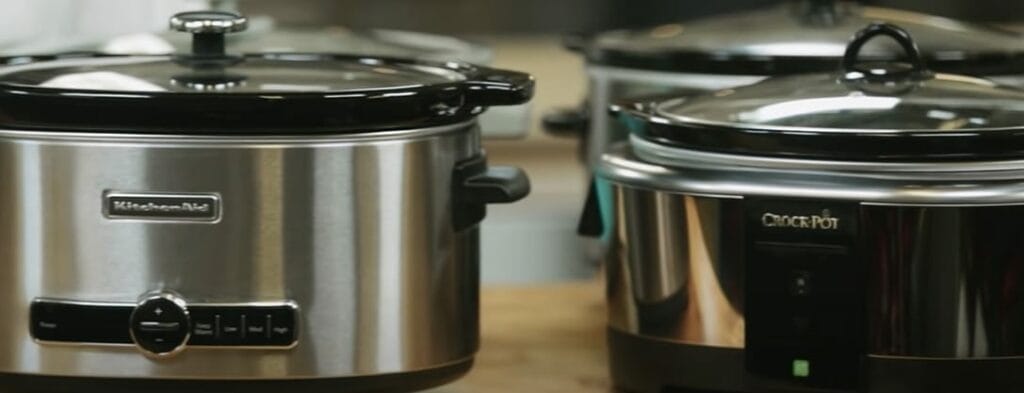
You might be tempted to plug your slow cooker into a power strip to save space, but resist the urge!
Slow cookers require a decent amount of electricity over an extended period, which can be too much for power strips to handle. Plugging a slow cooker into a power strip can lead to an overload, which might result in a fire or electrical damage.
Always plug your slow cooker directly into an outlet on a flat, stable surface to steer clear of any potential hazards. Trust me. It’s better to play it safe regarding power strip safety.
6. Hair-Care Appliances
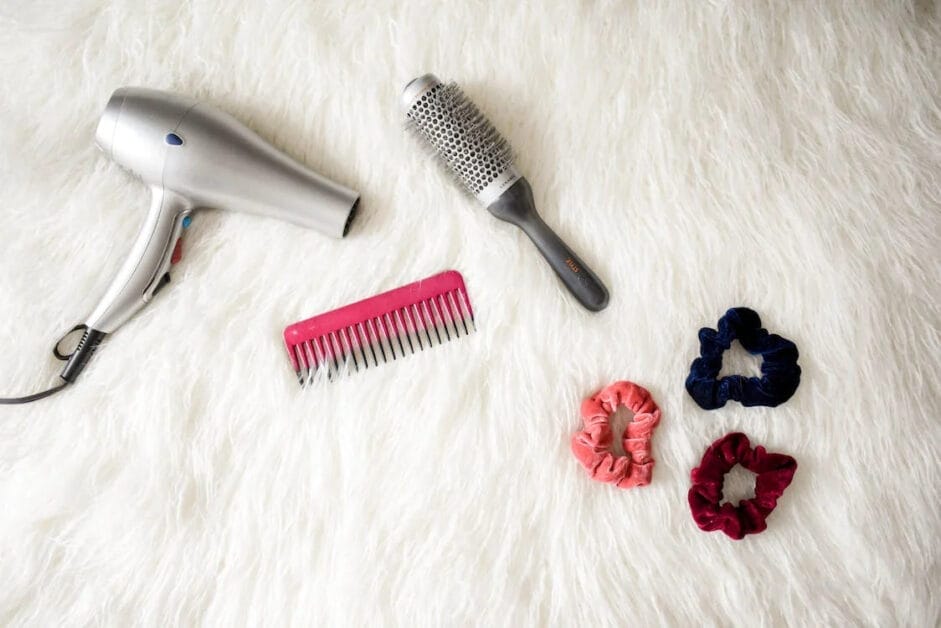
These appliances can sometimes demand lots of electricity.
In my experience, it’s best to plug hair-care appliances, like hairdryers, straight into a wall outlet rather than a power strip. The high wattage they require could overload the power strip, risking your safety.
Remember, when it comes to power strips, always think twice before plugging in high-powered devices. Hair may be important, but your safety comes first, my friends!
7. Air Conditioners
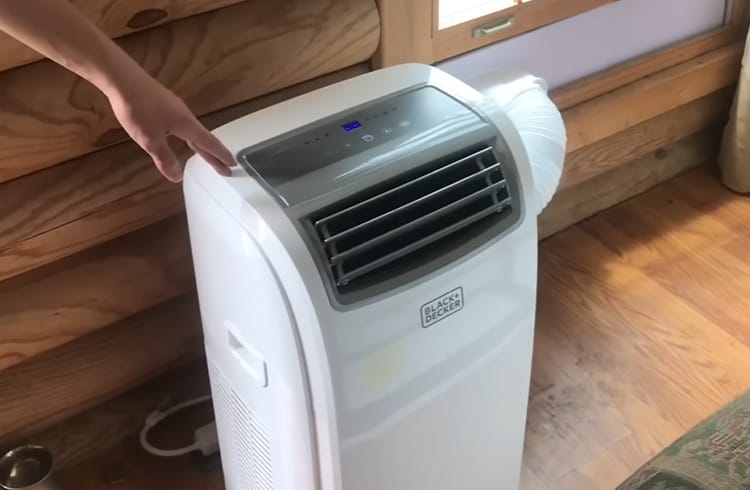
So, let me tell you something about air conditioners and power strip safety. When plugging in air conditioners, you might think using a power strip is a great idea, but I’d like to share my thoughts.
Air conditioners consume quite a lot of electricity. Plugging an air conditioner into a power strip can lead to some serious issues like overheating and even fire hazards. That’s not something we would like to deal with, right?
- Don’t plug air conditioners into power strips or extension cords. As I mentioned, air conditioners are big electricity users incompatible with power strips or extension cords. Stick to plugging them directly into the wall outlets.
- Choose power strips with an internal circuit breaker. Although you shouldn’t use power strips for air conditioners, when you do use them for other devices, ensure they have an internal circuit breaker. This will help prevent any potential issues related to power overloads.
- Avoid daisy-chaining power strips. Connecting a power strip to another power strip, also known as daisy-chaining, is a dangerous practice. It increases the risk of electrical fires and puts additional stress on the power strip. Stick to one power strip for your devices.
Isn’t it great to learn something new? I love sharing my knowledge on power strip safety. With these tips, you’re heading to a safer and more comfortable home environment.
8. Blenders
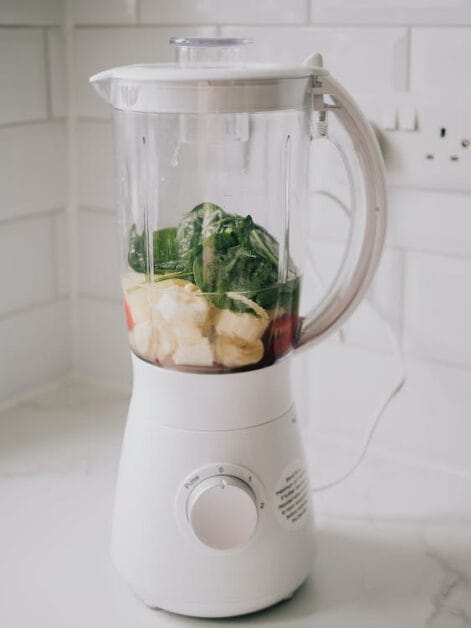
Like some other appliances, blenders draw significant power when operating. What does that mean for your power strip? Easy – it puts stress on the strip and can cause it to overload. That’s not something we want.
So, to keep it simple:
- Don’t plug blenders into power strips.
- Use a dedicated wall outlet for your blender.
9. Washing Machine

Using power strips for smaller appliances like lamps, clocks, and computers is a smart way to save on outlet space. But when washing machines, think twice before plugging them into a power strip.
Sure, power strips are incredibly handy, but they have their limits. Washing machines need a dedicated power source to handle their energy demands.
If you are tempted to use a power strip for your washing machine to save outlet space or make things more convenient, consider an alternate solution like a right-angle power adapter.
10. Portable Heaters
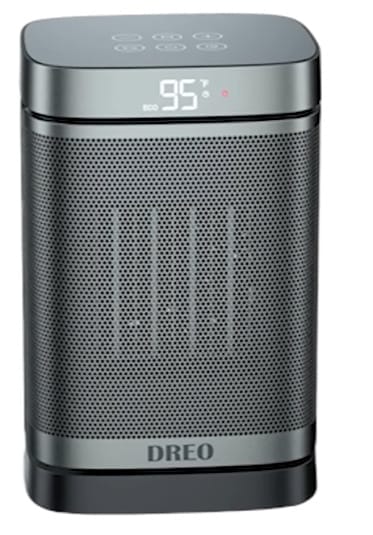
You know, I’ve seen a lot of people using portable heaters to warm up their rooms, and it’s important to ensure we’re being safe about it. One thing I can’t stress enough is not to plug these heaters into power strips.
They demand much more current flow than other appliances, and power strips can’t handle that extra current flow. This can potentially lead to a fire! The National Fire Protection Association reveals that space heaters accounted for many home heating fires and deaths between 2011 and 2015.
So, if you’re going to use a portable heater, remember these safety tips:
- Plug it directly into the wall outlet: This ensures that the heater gets the proper amount of power without overloading any devices.
- Please keep it safe: Ensure the heater is at least 3 feet away from anything flammable, like curtains or bedding.
- Choose heaters with safety features: Look for heaters with tip-over switches and overheat protection, which automatically turn off the heater if it gets too hot or is knocked over.
- Please turn it off when you leave the room or go to sleep: Don’t leave your portable heater unattended, as it could easily become a fire hazard.
I know it’s tempting to use power strips for everything, but your safety is worth the extra effort it takes to plug portable heaters directly into the wall. Stay warm and stay safe, folks!
Safety Tips

- Outlet Overload: Remember, just because there’s space on the power strip doesn’t mean every slot should be filled. Less is more when it comes to electrical safety.
- Surge Protectors: Invest in quality! Not all power strips offer surge protection. Ensure you’re using a surge protector to guard against sudden voltage spikes.
- Clear the Clutter: Keep your power strip area clean and free from dust or debris. A little tidying up can go a long way in preventing potential hazards.
- No Water Play: Always ensure your power strips are far from water sources. Kitchens, bathrooms, and outdoor spaces can be risky zones. Safety first!
- Stay Cool: Power strips need to breathe, too! Ensure they’re in a cool, dry place and not enclosed in tight spaces where they can overheat.
- Replace and Upgrade: If your power strip is showing its age, it’s time to bid it farewell. Look for wear, tear, or any damage – these are signs it’s time for a new one.
- Childproofing: Got little ones running around? Secure and cover unused outlets on your power strip with safety caps.
- Go Big on Quality: Don’t skimp when buying power strips. Look for recognized safety certifications. Your safety is worth a few extra bucks!
Maintenance Tips
Hey folks! Keeping your power strips in tip-top shape is not just about safety; it’s about ensuring they last longer and work efficiently. Here’s how you can give your power strip some TLC:
- Regular Check-Ups: Make it a habit to inspect your power strip every few months. Look for any signs of wear, fraying cords, or damaged sockets. If something seems off, it’s time for a replacement.
- Keep It Dry: Moisture and Electricity? Not a good mix! Always ensure your power strips are far from any water sources. If there’s a spill, unplug and dry it out completely before using it again.
- Dust It Off: Dust can accumulate in and around the sockets over time. Use a soft, dry cloth or a can of compressed air to clean the outlets and keep the dust at bay gently.
- Don’t Overload: Sure, using every outlet is tempting, but remember: less is more. Overloading can wear out your power strip faster and is a potential safety hazard.
- Give It Space: Ensure your power strip has enough room to breathe. Don’t tuck it into tight spaces or bury it under a pile of stuff. Keeping it in a well-ventilated area prevents overheating.
- Secure the Cord: Avoid tripping hazards by securing the power strip’s cord with cord clips or ties. But be gentle! You don’t want to damage the cord by pulling it too tight.
You can ensure your power strip stays safe and efficient for years with a little care and attention. Safety first, always!
Frequently Asked Questions
- What’s the Difference Between a Power Strip and a Surge Protector?
- Great question! A power strip extends your wall outlet, offering multiple outlets from one source. A surge protector, on the other hand, is designed to protect your electronic devices from voltage spikes. It’s like having a security guard for your electronics!
- How Often Should I Replace My Power Strip or Surge Protector?
- Like all things, power strips and surge protectors have a lifespan. If you notice any signs of wear and tear, it’s time to upgrade. On average, every 3-5 years is a good benchmark for replacement.
- How Can I Tell If My Power Strip Is Overloaded?
- If your power strip feels warm or you notice unusual sounds (like buzzing or sizzling), that’s a red flag. Also, if your devices seem to be operating slower when plugged into the strip, it might be time to lighten the load.
- Is There a Maximum Load for Power Strips?
- Absolutely! Every power strip has a maximum load, usually measured in amps. Check the label or packaging to find this info, and always aim to stay below this limit.
- Are There Power Strips Designed for Specific Devices?
- You bet! Some power strips are tailored for office equipment, while others might be suited for home entertainment systems. Always choose one that’s right for your needs.
- How Can I Protect My Devices During Storms?
- Storms can bring power surges, so it’s a good idea to unplug devices if you know a storm’s coming. If you have a surge protector, it’ll offer some protection, but unplugging is the safest bet.
References
Organizations:
- National Fire Protection Association (NFPA). https://www.nfpa.org/en
- U.S. Consumer Product Safety Commission (CPSC). https://www.cpsc.gov/
- Electrical Safety Foundation International (ESFI). https://www.esfi.org/
- Institute of Electrical and Electronics Engineers (IEEE). https://www.ieee.org/
Books:
- “Electrical Safety Handbook” by John Cadick, Mary Capelli-Schellpfeffer, Dennis Neitzel, and Al Winfield. https://www.accessengineeringlibrary.com/content/book/9780071745130
Website Resources:
- SafeElectricity.org. https://safeelectricity.org/
- Energy.gov. https://www.energy.gov/
Video References:
Samsung
America’s Test Kitchen
Live Free
Consumer Buddy
